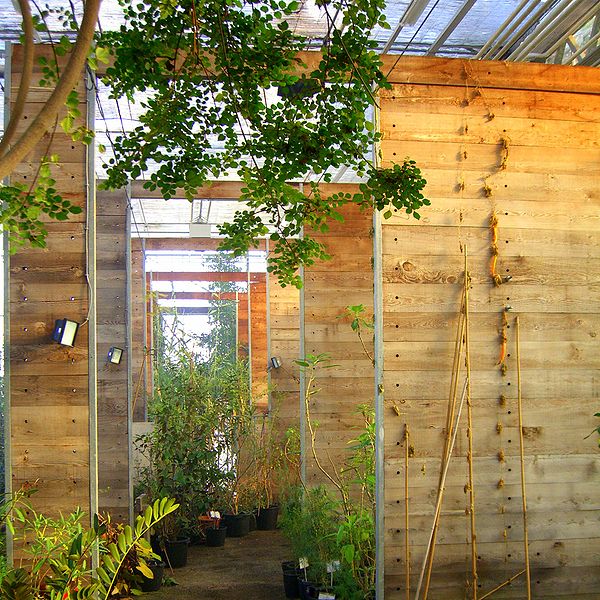The Softwood Lumber Board (SLB) and the Binational Softwood Lumber Council (BSLC) congratulated the U.S. Department of Agriculture on the formal launch of the U.S. Tall Wood Building Prize Competition.
The competition invites U.S. developers, institutions, organizations and design teams willing to undertake an alternative solution approach to designing and building taller wood structures to submit entries for a prize of $2 million.
Following a funding initiative announced by the Obama Administration and the U.S. forestry industry through the USDA, SLB and BSLC earlier this year, the goal of the prize competition is to link rural U.S. technical expertise and products with evolving domestic and international market opportunities to showcase the application and sustainability of innovative wood-based structural building materials and solutions.
The objective of the competition is to identify proponents with building project(s) in the concept-, schematic- or design-development stage in the U.S. that can safely and successfully demonstrate the use of wood as a viable structural material in tall buildings.
Above and beyond the safety, environmental and economic benefits of wood, the initiative will challenge developers, designers, building officials, builders and manufacturers to further develop and refine specification and use of structural wood products - ultimately expanding the opportunity for new product and market development.
Marc Brinkmeyer, SLB Board Chair explained, “There is a breadth of wood-related building science, design and construction that’s underway internationally. In recent years we’ve seen a number of buildings over seven stories constructed around the world, including the 10-story Forte building in Melbourne, Australia and the 14-story Treet building in Bergen, Norway."
The opportunity to learn from what’s been done elsewhere, and build on it here in the U.S., is very exciting for our industry, our employees and communities. I am equally thrilled and appreciative of the partnership that industry has forged with the USDA on this competition, and am looking forward to seeing the great wood-based projects that will result. Wood truly is an optimal choice for the environment and economy.”
The competition is the first step of a new USDA and forest industry initiative that is designed to support rural U.S. communities. Submissions that meet the criteria of the competition will be evaluated by an expert panel of design and building professionals. The full Official Rules document, related background information and contact details can be found on the prize competition website.
Related Stories
| Aug 11, 2010
PCA partners with MIT on concrete research center
MIT today announced the creation of the Concrete Sustainability Hub, a research center established at MIT in collaboration with the Portland Cement Association (PCA) and Ready Mixed Concrete (RMC) Research & Education Foundation.
| Aug 11, 2010
Study explains the financial value of green commercial buildings
Green building may be booming, especially in the Northwest, but the claims made for high-performance buildings have been slow to gain traction in the financial community. Appraisers, lenders, investors and brokers have found it difficult to confirm the value of high-performance green features and related savings. A new study of office buildings identifies how high-performance green features and systems can increase the value of commercial buildings.
| Aug 11, 2010
Architecture Billings Index flat in May, according to AIA
After a slight decline in April, the Architecture Billings Index was up a tenth of a point to 42.9 in May. As a leading economic indicator of construction activity, the ABI reflects the approximate nine to twelve month lag time between architecture billings and construction spending. Any score above 50 indicates an increase in billings.
| Aug 11, 2010
Architecture Billings Index drops to lowest level since June
Another stall in the recovery for the construction industry as the Architecture Billings Index (ABI) dropped to its lowest level since June. The American Institute of Architects (AIA) reported the August ABI rating was 41.7, down slightly from 43.1 in July. This score indicates a decline in demand for design services (any score above 50 indicates an increase in billings).
| Aug 11, 2010
RTKL names Lance Josal president and CEO
Lance K. Josal FAIA has been named President and CEO of RTKL Associates Inc., the international planning, design and engineering firm. Josal succeeds RTKL’s current President and CEO, David C. Hudson AIA, who is retiring from the firm. The changes will take effect on 1 September 2009.
| Aug 11, 2010
Balfour Beatty agrees to acquire Parsons Brinckerhoff for $626 million
Balfour Beatty, the international engineering, construction, investment and services group, has agreed to acquire Parsons Brinckerhoff for $626 million. Balfour Beatty executives believe the merger will be a major step forward in accomplishing a number of Balfour Beatty’s objectives, including establishing a global professional services business of scale, creating a leading position in U.S. civil infrastructure, particularly in the transportation sector, and enhancing its global reach.
| Aug 11, 2010
Construction unemployment rises to 17.1% as another 64,000 construction workers are laid off in September
The national unemployment rate for the construction industry rose to 17.1 percent as another 64,000 construction workers lost their jobs in September, according to an analysis of new employment data released today. With 80 percent of layoffs occurring in nonresidential construction, Ken Simonson, chief economist for the Associated General Contractors of America, said the decline in nonresidential construction has eclipsed housing’s problems.
| Aug 11, 2010
Billings at U.S. architecture firms exceeds $40 billion annually
In the three-year period leading up to the current recession, gross billings at U.S. architecture firms increased nearly $16 billion from 2005 and totaled $44.3 billion in 2008. This equates to 54 percent growth over the three-year period with annual growth of about 16 percent. These findings are from the American Institute of Architects (AIA) Business of Architecture: AIA Survey Report on Firm Characteristics.







